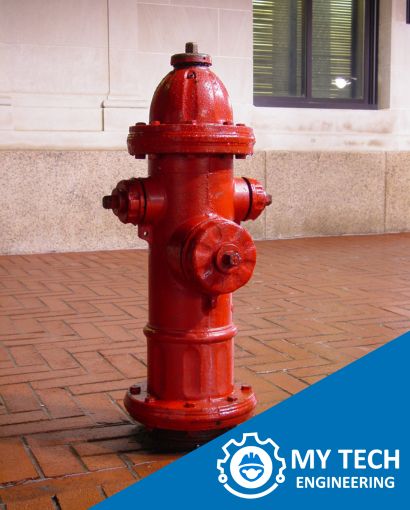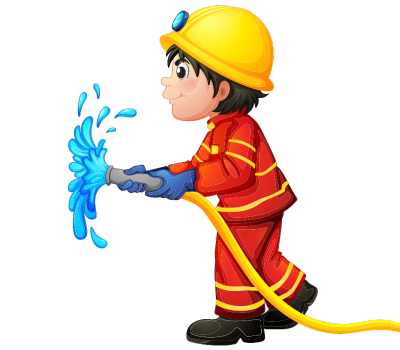Fire Hydrant System
Fire Hydrant System
A fire hydrant system is a crucial component of a water-based fire protection system. It provides a ready and reliable water supply to firefighters for extinguishing fires. The system typically includes fire hydrants, underground pipelines, water storage tanks, pumps, and other components.

Fire Hydrants:
Hydrant Types: There are different types of hydrants, including wet barrel hydrants (common in warmer climates) and dry barrel hydrants (common in colder climates to prevent freezing). Wet barrel hydrants have water constantly present in the barrel, while dry barrel hydrants drain the water when not in use.
Location: Fire hydrants are strategically located along streets and roads, providing easy access for fire trucks. They are typically installed in public areas and connected to the municipal water supply.
Color-Coding: Hydrants are often color-coded to indicate the available water flow. This helps firefighters assess the hydrant’s capacity quickly.
Underground Pipelines:
Water Supply: Fire hydrants are connected to underground pipelines that transport water from the municipal water supply or other water sources to the hydrants.
Valves and Control Devices: Valves are installed in the pipeline to control the flow of water. Control devices, such as gate valves and check valves, ensure that water flows in the desired direction.
Water Storage Tanks:
Water Reservoirs: In some cases, fire hydrant systems may include water storage tanks to ensure an adequate water supply in areas with low water pressure or unreliable water sources.
Pumps: In situations where the water pressure from the municipal supply is insufficient, pumps may be installed to boost the pressure and maintain an effective firefighting flow.
Fire Hose Connections:
Hose Outlets: Fire hydrants are equipped with outlets where firefighters can connect hoses to access the water supply.
Caps and Adapters: Caps protect the outlets from debris and contaminants, and adapters may be used to connect hoses of different sizes.
Markings and Signage:
Identification: Fire hydrants are often marked with identification numbers, colors, or other codes to help emergency responders locate and assess their capabilities quickly.
Signage: Clear signage indicating the presence of a fire hydrant and providing information about its capacity is essential for efficient firefighting operations.
GET YOUR FREE CONSULTATION
My Tech offers a Wide variety of services to cater your problematic situations.










